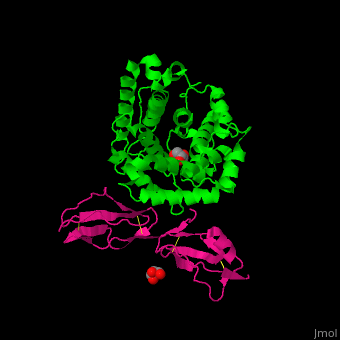Function
- Complement factor H (CFH) regulates the complement system which is part of the immune response. CFH protects cells by preventing the activation of the complement system when it is not needed. CFH contains 20 short consensus repeats (sushi domains, i.e., a 5 strand β-sandwich arrangement)[1].
- Complement factor D (CFD) and Complement factor B (CFB) regulate a key step in the activation of the alternative complement pathway. CFD is a member of the chymotrypsin family of serine proteases.
- Complement factor I (CFI) is a serum protease that inhibits all complement pathways.
- Complement factor P (CFP) is a positive regulator of the alternative complement pathway[2].
Disease
CFH mutations are involved in dense deposit disease, age-related macular degeneration, atypical hemolytic-uremic syndrome, schizophrenia, stroke and the kidney disorder glomerulonephritis. CFD and CFI are implicated in age-related macular degeneration[3], [4].
Relevance
CFH is recruited by human pathogens resulting in increased virulence. CFB is a novel target for treatment of cardiometabolic disease[5].
Structural highlights
The .
3D structures of complement factor
Complement factor 3D structures

